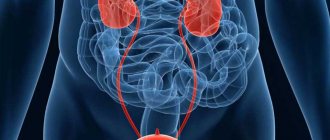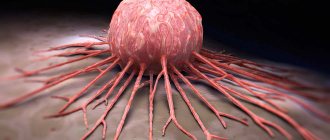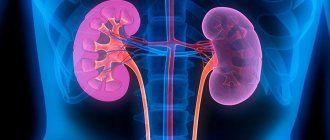Summary
The purpose of this study is to determine the effects of a high protein diet in trained subjects. The experiment lasted one year. Fourteen healthy trained men (mean ± SD; age 26.3 ± 3.9; height 178.5 ± 8.4 cm, with an average training experience of 8.9 ± 3.4 years) participated in the experiment. In random order, participants were fed a habitual or normal diet for 2 months and 4 months, alternating with a higher protein diet (>3 g/kg/day) for 2 months and 4 months. Thus, on average, each subject received a normal diet for 6 months and a higher protein diet for 6 months.
The body composition of the subjects was assessed using the Bod POD system (the ratio of fat and muscle mass of the body).
Each subject kept a diary for 100-168 days.
When subjects were fed a normal diet, they consumed (mean ± standard deviation) 29.94 ± 5.65 kilocalories/kg/day and 2.51 ± 0.69 g/kg/protein per day. The amount of protein increased significantly (p < 0.05) during the high protein diet to 34.37 ± 5.88 kcal/kg/day and 3.32 ± 0.87 g/kg/day.
Studies have shown that trained participants on a high protein diet (~2.51-3.32 g/kg/day) for a year showed no harmful abnormalities in blood lipid levels or liver and kidney function. . Additionally, despite an overall increase in energy intake during the high protein phase, subjects did not experience an increase in fat mass
Why are high-protein diets contraindicated for people with kidney disease?
Now you know that the main organ that removes the end products of protein breakdown is the kidneys. When they are affected by the disease, the glomeruli - the glomeruli of blood vessels that filter all the blood passing through them - begin to cope with their task worse. Therefore, in order not to overload already weakened kidneys, people with diseases of these organs are advised not to abuse protein foods. In addition, if the kidneys do not promptly remove toxic substances from the body, their accumulation can lead to problems with other organs and systems.
If you have kidney disease, you should not overuse protein foods.
It is important to understand that the amount of protein that can and should be consumed for kidney disease is determined based on the specific case. After conducting the necessary tests, the doctor will determine how much kidney function is reduced and recommend an adequate daily intake of protein and other products necessary for the normal operation of your small filters.
Thus, estet-portal.com would like to emphasize once again: the effect of protein on the kidneys depends on their condition. A healthy person, as studies show, should not worry about kidney damage due to a protein diet. However, patients with kidney diseases must definitely plan their diet with their doctor!
Methods and materials
2.1. Participants
Fourteen trained men agreed to voluntarily participate in this experiment (racial/ethnic background: 10 white men, 3 black men, and 1 Pacific Islander). Subjects took part in a randomized crossover study where they consumed a regular protein diet (i.e., normal protein) or a high-protein diet for two months and four months, respectively. The order of consumption of normal protein or high protein diet was randomized. In total, participants consumed a regular and high-protein diet for 6 months, respectively. Subjects visited the laboratory five times. Their initial level was recorded, then data after two two-month intervals and two four-month periods with an appropriate diet. The additional protein consumed by each subject came primarily from whey protein powder, which was provided free to each subject (Dymatize® ISO-100 with 25 g protein, 1 gram carbohydrate, and zero fat per scoop). However, participants were not required to consume additional protein powder; instead, they could take whatever additional protein source they preferred. In accordance with the Declaration of Helsinki Human Rights Council, Novo Southeastern University approved this study and written permission to participate in the experiment was obtained.
2.2. Food Diary
Participants in the experiment kept a diary (namely, three days a week for one year) of food intake through a smartphone application (MyFitnessPal), there were ~ 150 daily food intake logs, which were kept throughout the entire period. Mobile applications for self-reporting have been used previously [6-9]. Each subject had experience with this mobile application. The MyFitnessPal app is a database of more than 5 million products that are provided to users through manual data entry or scanning barcodes on packaged items. Thus, the data itself is primarily obtained from food labels (i.e., the nutritional value of the product), or from the USDA National Nutrient database.
2.3. Body composition
Height was measured using a standard anthropometry scale, and total body weight using a graduated scale. Body composition was assessed using whole body densitometry, air movement (from the author - to determine body composition - fat versus muscle mass) through a Bod Pod (The Bod Pod measures body mass (weight) using an accurate scale and volume while sitting inside a BOD POD (COSMED USA , Concord, CA. All testing was conducted in accordance with the manufacturer's instructions. Subjects reported to the laboratory for evaluation after a 3-hour fast and no exercise for 24 hours. All subjects wore tight-fitting clothing (swimsuit or underwear) during the test. underwear) or acrylic swim trunks. Subjects wore the same clothing throughout the experiment. Thoracic gas volume was determined for all subjects using a predictive equation for Bod Pod software. Each subject was tested at least twice per visit. Data Body Pods include body weight, body fat percentage, lean mass, and fat mass. All measurements were taken with each participant at approximately the same time of day, for each of the five testing sessions. Although hydration was not measured, each subject was monitored in the same manner throughout the study. The Bod Pod was calibrated on the morning of testing, as well as before testing for each participant in the experiment.
2.4. Blood test: comprehensive metabolic panel and blood lipids
Subjects in a fasting state were interviewed using the Quest Diagnostic five times. A blood test was done for lipids and an entire extensive metabolic panel. Which includes the following indicators: glucose, blood urea nitrogen (BUN), creatinine, glomerular filtration rate, BUN/creatinine ratio, sodium, potassium, chloride, carbon dioxide, calcium, total protein, albumin, globulin, albumin/globulin ratio, bilirubin, alkaline phosphatase, alanine transaminase, aspartate transaminase, total cholesterol, high-density lipoprotein cholesterol, triglycerides, low-density lipoprotein cholesterol and the ratio of total cholesterol to high-density lipoprotein cholesterol. Using the Quest Diagnostics method, each test was performed according to the company's standard operating procedures.
2.5. Training program
Each participant followed their own strength and conditioning program. The trial supervisors ensured that each participant kept an accurate log throughout the experiment. The volume of loads (i.e. the total weight lifted during the week) was established for each training period.
2.6. Data processing
For data analysis: where p value <0.05 was considered significant, two-way ANOVA was used. Comparison data were presented as baseline and mean values for the usual intake period [combined 2-month and 4-month intake] and mean for the high-protein diet period [combined 2-month and 4-month intake] . Data are expressed as values ± SD. Statistical analysis was performed using Prism 6 GraphPad software (La Jolla, California).
results
Body composition data are shown in Table 1. Dietary intake data are shown in Table 2. Participants consumed more absolute and relative calories and protein during the high protein phase (p < 0.05).
There were no significant differences between the normal and high protein groups in any health status or body composition assessment (Tables (Tables 33 and and4).4). It should be noted that one of the subjects was on a high protein diet for 6 months and only 2 months on a normal protein diet. Due to a change in his geographic location, he did not complete the experiment without completing the final 4 months of the normal protein diet. In the case of this particular participant, we derived the average based on his normal protein intake (2 months) and high protein diet (6 months data). Table 1.
Body composition and training volume
| Baseline | Normal | High | |
| Weight, kg) | 84.05 ± 10.20 | 84.55 ± 10.73 | 85.18 ± 11.04 |
| Fat mass (kg) | 11.42 ± 3.13 | 12.39 ± 3.85 | 12.30 ± 3.26 |
| FFM (kg) | 72.63 ± 9.19 | 72.15 ± 8.41 | 72.73 ± 9.65 |
| % body fat mass | 13.59 ± 3.21 | 14.48 ± 3.48 | 14.49 ± 3.59 |
| Load volume∗ | 50,160 ± 17,510 | 48,684 ± 19,436 | 51,023 ± 20224 |
Table 2.
Daily intake
| Original | Ordinary | Elevated | |
| Kcl | 2452 ± 571 | 2511 ± 479 | 2919 ± 562∗ |
| Carbohydrates g | 229 ± 75 | 226 ± 64 | 241 ± 71 |
| Proteins g | 196 ± 92 | 214 ± 76 | 284 ± 90∗ |
| Fat g | 83 ± 35 | 83 ± 22 | 91 ± 23 |
| Kcl/kg/d | 29.40 ± 7.19 | 29.94 ± 5.65 | 34.37 ± 5.88∗ |
| Carbohydrates g/kg/d | 2.78 ± 0.94 | 2.74 ± 0.89 | 2.87 ± 0.94 |
| Proteins g/kg/ | 2.31 ± 1.03 | 2.51 ± 0.69 | 3.32 ± 0.87∗ |
| Fats g/kg/d | 1.00 ± 0.41 | 0.99 ± 0.26 | 1.07 ± 0.23 |
| Cholesterol mg | 535 ± 336 | 425 ± 242 | 602 ± 310 |
| Sodium mg | 3042 ± 1360 | 3228 ± 1069 | 3562 ± 964 |
| Sugar g | 55 ± 38 | 56 ± 22 | 62 ± 22 |
| Fiber g | 26 ± 15 | 29 ± 13 | 31 ± 13 |
Mean ± SD. Significant difference between basic and high and normal and high: at p<0.05. d-day
Table 3
.
Blood lipids
.
| Original | Ordinary | High | Reference value | |
| Total cholestasis, mg/dL | 158 ± 28 | 146 ± 21 | 151 ± 26 | 125–200 |
| HDL-C mg/dL | 48 ± 15 | 48 ± 12 | 45 ± 11 | > or= 40 |
| Triglytz mg/dL | 61 ± 18 | 62 ± 24 | 64 ± 18 | <150 |
| LDL-C mg/dL | 98 ± 33 | 86 ± 18 | 92 ± 22 | <130 |
| Ratio Cholest/HDL | 3.9 ± 3.0 | 3.5 ± 1.6 | 3.5 ± 0.9 | or = 5.0 |
Mean ± SD. There were no significant differences between the groups. X-cholesterol, dL: decoliter, HDL – high-density lipoproteins, LDL – low-density lipoproteins
Table 4.
Comprehensive metabolic panel.
| Base | Ordinary | High | Ref.values | |
| Glucose mg/dL | 84 ± 11 | 87 ± 13 | 85 ± 9 | 65–99 |
| BUN mg/dL | 22 ± 6 | 22 ± 5 | 22 ± 4 | 7–25 |
| Creatinine mg/dL | 1.1 ± 0.2 | 1.1 ± 0.1 | 1.1 ± 0.2 | 0.60–1.35 |
| SCF | 95 ± 19 | 101 ± 17 | 98 ± 16 | # |
| BUN/creatinine coefficient | 20 ± 5 | 21 ± 5 | 20 ± 3 | 6–22 |
| Sodium mmol/L | 139 ± 2 | 139 ± 1 | 138 ± 1 | 135–146 |
| Potassium mmol/l | 4.3 ± 0.4 | 4.4 ± 0.3 | 4.3 ± 0.2 | 3.5–5.3 |
| Chloride mmol/l | 103 ± 1.7 | 102 ± 1.5 | 102 ± 1.7 | 98–110 |
| CO2 mmol/l | 28 ± 2 | 28 ± 2 | 28 ± 2 | 19–30 |
| Calcium mg/dl | 9.6 ± 0.2 | 9.6 ± 0.2 | 9.7 ± 0.3 | 8.6–10.3 |
| Total protein g/dl | 7.2 ± 0.3 | 7.1 ± 0.4 | 7.1 ± 0.3 | 6.1–8.1 |
| Albumin g/dl | 4.6 ± 0.2 | 4.5 ± 0.2 | 4.5 ± 0.2 | 3.6–5.1 |
| Globulin g/dl | 2.5 ± 0.3 | 2.6 ± 0.3 | 2.6 ± 0.3 | 1.9–3.7 |
| Albo/Global ratio | 1.8 ± 0.2 | 1.8 ± 0.2 | 1.8 ± 0.2 | 1.0–2.5 |
| Total bilirubin mg/dL | 0.7 ± 0.4 | 0.8 ± 0.6 | 0.7 ± 0.3 | 0.2–1.2 |
| Alkaline phosphatase U/l | 64 ± 17 | 67 ± 17 | 66 ± 16 | 40–115 |
| AST U/l | 28 ± 9 | 27 ± 6 | 31 ± 13 | 10–40 |
| ALT U/l | 28 ± 18 | 26 ± 8 | 31 ± 15 | 9–46 |
Data presented - mean ± SD. There were no significant differences between the groups. AALT: alanine aminotransferase, AST: aspartate transaminase, BUN: blood urea nitrogen, GFR: estimated glomerular filtration rate, # Indicates value > or = 60 ml/min/1.73 m2.
Discussion
This is the first randomized controlled trial to examine the effects of a high-protein diet in trained participants who followed the diet for a year. In a nutshell, we found no harmful effects of a high protein diet (2.51-3.32 g/kg/day) over the entire observation period. Previous work in our laboratory has shown that high-protein diets do not have harmful effects in the short term, as determined by clinical monitoring (i.e., blood lipid levels and comprehensive metabolic panel monitoring) [6, 7 ].
In the present study, subjects alternated between a normal protein diet, a regular protein diet, and a high protein diet. It should be noted, however, that even a normal amount of protein intake may be considered high by other participants [5, 11, 12]. Thus, our study does not support the view that protein intake 3-4 times greater than the RDA (recommended dietary allowance) causes any harmful effects.
Additionally, the amount of dietary fiber our participants consumed was ~30 grams per day. This differs from the average fiber intake in the United States of ~16 g per day [13]. Thus, we consider it unreliable that high protein diets are mutually exclusive with a high fiber diet. Our participants did not show any harmful effects after consuming a hyper-energetic, high-protein diet, and this (see blood lipid levels, kidney and liver function, etc.) may be due in part to fiber intake. It is known that increased fiber intake is associated with a lower risk of cardiovascular disease, cancer and mortality from other causes [14 – 16]. On the other hand, our subjects' cholesterol intake was twice the typically recommended 300 mg per day [17]. The idea that high cholesterol intake has a detrimental effect on blood lipids in cardiovascular disease is not supported by our data.
Previous studies in our laboratory have found that protein consumption (2.3-3.4 g/kg/day) in amounts that are 3-4 times higher than the RDA allowed, showed an increase in lean mass gain (FFM - fat free mass) as in the diet groups with normal and high protein content [6]; However, the high protein diet group lost more fat mass than the normal protein diet group, despite consuming an average of ~400 kcal more per day throughout the observation period. The data differs from the current one, which showed no changes in body composition. The main difference between this study and those mentioned above is that the participants in the experiment did not make targeted changes to their training programs. On the other hand, participants in previous studies made changes to the training regimen (i.e., changing the frequency of strength training programs) to which they were accustomed. Because the focus of this experiment was on health outcomes, participants were instructed not to change their training regimen. Data on load volumes indicate that they did not make any significant changes to the training regimen. Thus, it can be assumed that without significant changes in training regimen, simply consuming additional protein will most likely not lead to changes in body composition. On the other hand, simply consuming extra protein calories does not increase fat mass either.
4.1. Contraindications
As for contraindications, according to the results of this study, some may speculate that the participants were young men who had been engaged in strength training for several years and regularly received a diet high in protein.
However, the fact that they received a diet with 32% more protein and found no harmful side effects is proof that a high protein diet is indeed safe for trained people. A small part of the sample from the study results can be excluded due to the population group, those men and women who lead a sedentary lifestyle. However, we would insist that the only group of people who consume high protein diets are athletes (namely strength and endurance athletes). Therefore, the application of our findings to other populations may be controversial.
The Dangers of Excess Protein Consumption
Consumption of protein foods is extremely necessary to maintain normal human life. The reason for this is that proteins are a source of essential amino acids necessary for the synthesis of important proteins and peptides. As a result, many people find a high-protein diet healthier. The global protein supplement market is projected to generate approximately US$90 billion by 2021, driven in large part by the increasing demand for protein-containing foods. This article highlights the dangers of excess protein intake and provides evidence-based data that indicates the potential harm to public health from excess protein intake.
Protein is an essential macronutrient that contributes to the body's production of essential amino acids necessary for the synthesis of proteins that make up the musculoskeletal system, support the function of vital organs and immune cells, and also function as regulatory and transport molecules. As a result, intake of essential amino acids is essential for optimal functioning of the body. In case of insufficient protein intake or illness, the amino acids stored in the muscles are used for further protein synthesis. In addition, protein is known to satiate the appetite more strongly than carbohydrates and fats, which could potentially be used for the prevention and treatment of obesity. This is why various communities recommend increased protein intake to increase muscle mass and normalize body weight.
However, including excess protein in the diet may impair insulin secretion and increase the risk of type 2 diabetes mellitus (T2DM). Among other things, it is known that a high-protein diet has a negative effect on the functional state of the kidneys. Based on this, an important point is to determine the required daily protein requirement.
Figure 1 | Association between protein intake and health status. EAR—Expected Average Requirement, RDI—Recommended Daily Intake, IOM—Institute of Medicine (explained in text). Recommendations for consuming protein-containing foods
The Institute of Medicine (IOM), a non-profit organization of the National Academy of Sciences of the United States, determined that the average protein requirement for adults is 0.6 g/kg per day and suggested that the recommended daily intake (RDI) ) to prevent loss of nitrogenous bases (i.e. muscle loss) in 97.5% of adults is 0.8 g/kg per day. Subsequently, an expert meeting of the Food and Agriculture Organization of the United Nations, WHO and the United Nations University established a population reference intake (PRI) of 0.83 g/kg per day, which was considered adequate for all adults. The IOM also suggested that daily protein intake should comprise 10–35% of total daily calorie intake, even though protein intake of 15% or more of daily energy intake through protein exceeds the RDI and PRI values.
International expert groups (European Society for Parenteral and Enteral Nutrition and the PROT–AGE study) recommend protein intake at a rate of 1.0–1.2 g/kg per day, which is higher than the RDI and PRI, for people in the older age group (over 65 years of age) ) to prevent the decline in muscle mass associated with age. High protein intake (more than 0.8 g/kg per day) is also generally recommended for maintaining or losing body weight, which is associated with greater satiety when eating protein foods rather than foods rich in carbohydrates and fats, and a greater thermic effect (increased metabolic rate induced by diet due to the digestion, absorption and metabolism of consumed nutrients). Awareness that increased protein intake has positive effects on muscle mass, muscle function, and body weight encourages society to believe that a high-protein diet is beneficial. For example, ~65% of US adults prefer protein-containing foods and drinks and “try to eat more protein.”
Protein intake
Many adults in the United States and other developed countries actually consume more protein than recommended by the RDI and PRI, with some consuming even more protein than recommended for older adults. For example, the Framingham Third Generation Study, conducted in the United States, showed that 82% of people taking part in the study took at least the recommended daily intake, and the median protein intake in the first, second, third and fourth quartiles was 0.8, 1 .1, 1.3 and 1.8 g/kg per day, respectively. Subsequently, in the NHANES (National Health and Nutrition Examination Survey) 2001–2014 study, also conducted in the USA, it was found that the minimum daily protein intake was similar to the result of the Framingham study in 85% of the subjects. In NHANES, mean protein intake was higher in men and younger adults. Average intakes ranged from 1.5 g/kg per day in men 18–30 years of age to 1.0 g/kg per day in women 80 years of age and older. In general, protein intake is proportional to caloric intake and accounts for approximately 15% (interquartile range 10–22%) of total caloric intake. Carbohydrate intake accounted for approximately 50% and fat intake accounted for 35% of total calorie intake across all ages and across body mass index (BMI) ranges. Accordingly, high protein intake (more than 0.8 g/kg per day) was more common outside of cases of caloric restriction, consumption of carbohydrates and/or fats.
Protein metabolism in muscle tissue
In the post-absorptive period (during fasting), there is a direct balance of muscle protein (that is, muscle proteins are lost) due to the fact that protein breakdown prevails over its synthesis in the muscles. Taking protein or a mixture of macronutrients stimulates protein synthesis in muscle tissue. This effect is activated by a postprandial increase in plasma amino acid levels, which activate anabolic signaling pathways to increase their supply to the muscles for further protein synthesis. In addition, consuming protein or a mixture of macronutrients also inhibits the breakdown of muscle proteins by stimulating insulin secretion. Insulin has potent anti-proteolytic effects, and the plasma concentration of insulin required to inhibit muscle protein breakdown is about 15–30 μU/mL. This concentration is achieved by taking a small (about 250 kcal) mixed meal. The stimulating effect of dietary protein on protein synthesis in muscle tissue and the inhibitory effect of insulin on the breakdown of muscle proteins promote protein deposition in muscles. In this regard, an increase in muscle mass occurs when postprandial accumulation of protein in muscle exceeds postabsorptive loss of protein.
Figure 2 | The effect of protein consumption on protein metabolism and amino acid oxidation in muscles.
The ability of muscles to convert ingested protein and its constituent amino acids into myofibrillar and other intramyocellular proteins is highly regulated. The relationship between protein intake and the level of postprandial protein synthesis in muscle tissue depends on the degree of saturation, reaching a maximum synthesis level of 0.25 g/kg and 0.40 g/kg in young (18–37 years old) and middle-aged and older individuals age group (over 55 years old), respectively. On average, this equates to approximately 18 g of protein per meal in young adults and approximately 28 g of protein in older adults. Amino acids from protein are consumed in greater quantities than they are oxidized. Because of the above, the researchers recommended a maximum stimulating dose of protein—about 30 grams—to be consumed at each meal. However, muscle protein synthesis is refractory to persistent hyperaminoacidemia and protein synthesis returns to basal values after 2.5 hours, even when plasma amino acid concentrations are still high or continue to increase due to direct ingestion. These physiological factors make it difficult to increase muscle protein gains by increasing the level and frequency of protein intake.
Protein intake and lean tissue mass.
The effects of increased protein intake on total body weight, lean tissue mass, and muscle mass were assessed in both population-based studies and randomized controlled observational studies. These randomized controlled trials included weight maintenance, high-calorie diet, and diet-induced weight loss studies. Population-based studies included cross-sectional and longitudinal studies. Total lean tissue mass was assessed by various methods such as dual-energy X-ray absorptiometry (DXA), bioimpedance, air displacement plethysmography, hydrostatic weighing, or deuterium oxide isotopic dilution. Lean mass was assessed as lean mass of the limbs and assessed by DXA.
Population studies. One cross-sectional study conducted in the United States found that BMI and waist circumference were inversely associated with protein intake (expressed as grams per kilogram of body weight per day). However, another study conducted in the UK found that protein intake (expressed as a percentage of total caloric intake) was directly associated with BMI and waist circumference. Moreover, in both cases, weight gain and risk of developing obesity were directly associated with protein intake (expressed as a percentage of total energy intake) in several long-term cohort studies that were conducted in Europe. Total lean tissue mass and muscle mass have been directly associated with protein intake in several population-based studies from the US and UK, and these studies have suggested protein-associated increases in body weight in other studies through increased lean tissue mass. However, these effects were small and statistically insignificant. In the Framingham study described above, individuals consuming the lowest quartile of protein intake, that is, less than 0.8 g/kg per day, had lower limb lean mass than those consuming a higher gram. However, limb lean mass did not differ among individuals in the other three quartiles. In the prospective Health ABC study, USA, men and women aged 70–79 years who consumed less than 0.8 g/kg protein per day lost statistically significantly more total and lean limb mass over 3 years of follow-up compared with those who consumed 0.8 g. /kg per day or more. However, the protective effect of increased protein intake did not prevent or attenuate the normal age-associated loss of lean tissue mass and muscle mass in individuals maintaining their body weight.
Randomized controlled trials of weight maintenance. Results from several randomized controlled trials have demonstrated that increased protein intake of 30–56 g per day for 12 weeks to 2 years had no effect on body weight or lean mass in overweight or obese individuals. Additionally, high-protein dietary regimens did not help gain muscle mass (assessed as lean limb mass using DXA or histological assessment of muscle fiber cross-sectional area) in older age groups (65 years and older) who consumed adequate levels of protein at baseline. Some systematic reviews and meta-analyses also show little or no effect of increased protein and amino acid intake on exercise-induced muscle hypertrophy in middle age (over 45 years) and in the older age group (65 years and over). But increased protein intake above the RDI increased the level of exercise-induced muscle hypertrophy in young people (<45 years of age).
Randomized controlled trials with high-calorie diet. One randomized controlled trial assessed the effects of a high-calorie diet that included approximately 40% more than required for weight maintenance (an additional approximately 1000 kcal per day) and varying amounts of protein on body weight and lean body mass. In this study, people who ate a low-protein, high-calorie diet (less than 0.7 g/kg per day) gained less lean mass than those who ate a high-calorie, high-protein diet. However, when protein intake was adequate, high intake did not significantly increase lean body mass: as such, the increase in lean body mass did not differ between individuals consuming 25% of daily calories from protein compared with those consuming 15% of daily calories. Moreover, individuals on a low-protein diet (5% protein, approximately <0.7 g/kg protein per day) gained less total body weight compared to individuals on a high-protein diet (15% and 25% total calories or ≥ 0 .8 g/kg protein per day). In addition, overall weight gain was similar among people consuming 25% or 15% of daily protein calories. Another randomized controlled trial assessed the effects on lean mass of a caloric and protein excess diet (2.0 g/kg protein per day) on weight regain in US Marines following short-term severe negative energy balance during training. The subjects consumed 84–133 g of protein per day. This study found that protein supplementation had no beneficial effect on lean mass recovery.
Randomized controlled trials of weight loss. The ability of high-protein diets to reduce body weight has been examined in several systematic reviews and meta-analyses. The authors of these studies found a beneficial effect of a high-protein diet (≥0.8 g/kg per day) on weight loss over a short period of time (less than 12 weeks). Also, the effect of this diet in combination with a low carbohydrate diet in the intervention group contributed to greater weight loss at longer follow-up compared to the control group receiving a low-protein diet (<0.7 g/kg per day). However, in groups without a reduction in carbohydrate intake, when observed for more than 12 weeks, there was no significant decrease in body weight compared to groups taking 0.8 g/kg protein per day. Weight loss caused a decrease in total body weight due to a decrease in both fat and lean mass. Consuming a high-protein diet during weight loss reduces the loss of lean mass and muscle mass compared with diets that include the recommended daily allowance of protein. Several systematic reviews and meta-analyses have shown that a high-protein diet (more than 1.0 g/kg per day) compared with a diet containing normal protein (0.8 g/kg per day) prevented weight loss by 0.5–1.0 kg of lean mass during a moderate reduction in body weight (5–10% of the original). In a randomized controlled weight loss intervention trial in which all study participants were given free choice of food, it was found that increasing protein intake by 50% (1.2 g/kg per day vs. 0.8 g/kg protein per day) during 10% diet-induced weight loss (approximately 26 weeks) prevented loss of lean mass by up to ~0.7 kg and muscle mass in the bilateral thighs (assessed by MRI) by up to ~0.05 kg. At the same time, this did not depend on the amount of protein in each individual meal during the day; it was the total daily intake that had the effect. It is interesting to note that 24-hour enteral tube feeding with 1.2 g/kg protein per day did not prevent short-term loss of lean mass and muscle mass due to bed rest for 1 week in healthy men. Summary. Although increased protein intake (greater than 0.8 g/kg per day) may increase muscle mass during resistance exercise in young men and to some extent attenuate the loss of lean mass and muscle mass in obese people, evidence from randomized controlled trials is inconsistent. support the beneficial effects of a high-protein diet on total lean mass or lean mass during weight maintenance or weight gain.
Protein intake and physical functioning
The effects of high protein intake on physical functioning (including muscle strength and daily activity) have been assessed in cross-sectional and long-term population studies, as well as randomized controlled trials.
Population studies. Muscle strength and general physical functioning, including activities of daily living, have been directly associated with protein intake in several population-based studies. However, these associations have not been assessed systematically and because the negative effects of low (less than 0.8 g/kg per day) dietary protein intake are much more common than the positive effects of high (more than 0.8 g) protein intake. /kg per day) or ceased to be statistically significant after removing important confounding influences, such as excess deposition of fat in the trunk. Moreover, high protein intake did not prevent or attenuate age-associated loss of muscle strength, as assessed by grip strength, and general physical functioning, as assessed by the timed chair rise test and timed walk test.
Randomized controlled trials. Data from most randomized controlled trials conducted during subjects' weight maintenance or diet-induced weight loss trials have shown that increased protein intake above the RDI for up to 2 years has no beneficial effects on maintaining muscle strength or overall physical functioning. . In comparison, data from several randomized controlled trials, including two pilot studies, have shown statistically, but presumably not clinically significant, beneficial effects of increased protein intake for 10 to 24 weeks on certain measures of strength and physical functioning.
Summary. Data from population-based and randomized controlled trials do not support clinically measurable beneficial effects of increased protein intake (more than 0.8 g/kg per day) on muscle strength and overall physical functioning.
Glucose homeostasis
The concentration of glucose in the blood plasma is regulated by the balance between hepatic and renal glucose production, the absorption of glucose into the systemic circulation from the intestine, and the degree of glucose uptake by tissues. Insulin is the main regulator of endogenous glucose production and glucose uptake by peripheral tissues. It suppresses endogenous glucose production directly through its effects on hepatocytes and indirectly through inhibition of glucagon production. In addition, insulin reduces the release of free fatty acids into the blood by inhibiting the lipolysis of triglycerides in adipose tissue. Endogenous glucose production and lipolysis are mechanisms that are very sensitive to the effects of insulin; therefore, for their maximum suppression, slight increases in the level of insulin in the blood above the basal level of its secretion are sufficient. In addition, insulin stimulates tissue glucose uptake, especially muscle, in a dose-dependent manner, but the maximum stimulatory effect of insulin on tissue glucose uptake is significantly greater than the normal postprandial rise in plasma insulin levels. Individuals with prediabetes or type 2 diabetes have elevated plasma glucose concentrations, a condition called hyperglycemia. Several mechanisms are responsible for the development of this pathogenetic phenotype. First, hepatic glucose production is enhanced by hyperglucagonemia. Subsequently, multiorgan (liver, adipose and muscle tissue) insulin resistance occurs, which is characterized by impaired insulin-regulated suppression of hepatic glucose production, decreased lipolysis in adipose tissue and impaired tissue glucose uptake. When these effects are combined with an insufficient compensatory increase in insulin secretion and a decrease in insulin clearance, glucose homeostasis is disrupted and hyperglycemia occurs.
Protein intake and glucose metabolism. Protein consumption and the subsequent increase in plasma amino acid levels have a strong effect on glucose metabolism. Dietary intake of protein and amino acids stimulates the secretion of both glucagon and insulin in a dose-dependent manner. In addition, increasing plasma amino acid concentrations by infusion of either a complete amino acid mixture or an essential amino acid mixture impairs insulin action (assessed using a hyperinsulinemic-euglycemic clamp) in healthy subjects. Glucagon secretion in response to protein consumption normally increases in order to reduce excess amino acids and nitrogenous compounds in the blood plasma by stimulating amino acid catabolism and urea formation. Also, stimulation of glucagon secretion and glucose production by the liver, together with inhibition of insulin-induced glucose reduction, prevents the development of hypoglycemia. However, the insulin/glucose ratio is often higher after protein ingestion compared to fasting, and is also often higher after protein and carbohydrate ingestion compared to carbohydrate alone. This occurs because the concentration of insulin, but not glucose, increases after eating protein. The type of protein consumed affects the rate of absorption and the level of amino acids that enter the bloodstream. For example, a faster and more pronounced increase in plasma insulin concentration, compared with casein intake, was found after taking whey. The type of protein is thus a potentially important factor in the metabolic response to protein ingestion.
Protein intake, insulin sensitivity, and glycemic control. The insulinotropic effect of protein intake may help people with type 2 diabetes control their blood glucose levels. For example, protein “preload” before carbohydrate intake or their simultaneous intake helps improve glucose-dependent insulin secretion and reduce postprandial hyperglycemia in individuals with type 2 diabetes. In people without type 2 diabetes, however, the insulinogenic effect of protein intake may be involved in the pathogenesis of insulin resistance. This is supported by studies showing that even small experimentally induced increases in plasma insulin concentrations in healthy individuals can cause insulin resistance within a few days, presumably through a down-regulation of insulin receptor expression and the occurrence of post-receptor defects in insulin signaling. The effects of a long-term high-protein diet on insulin sensitivity and plasma glucose levels in healthy individuals, obese individuals, and individuals with type 2 diabetes are not completely clear. Authors of several systematic reviews and meta-analyses of randomized controlled trials have concluded that it is not possible to determine the effects of a high-protein diet on insulin sensitivity and glycemic control due to possible confounding factors (food choice, diet composition, differences between study characteristics in the study and control groups), and differences in methods for assessing insulin sensitivity. A study of overweight and obese individuals using a hyperinsulinemic-euglycemic clamp combined with a stable infusion of isotope-labeled glucose found that consumption of a high-protein (weight maintenance) diet for 6–18 weeks caused a small but statistically significant increased basal hepatic glucose production and impaired insulin-dependent reduction in glycemic levels after 6 weeks. There was no statistically significant difference after 18 weeks, but adherence to dietary recommendations was poor after 6 weeks, which may have influenced the results.
Protein intake during diet-induced weight loss and glucose metabolism. Increasing protein intake in combination with reducing dietary carbohydrate intake contributed to weight loss and a decrease in daily plasma glucose concentrations and HbA1c in obese people with type 2 diabetes, even with minimal (less than 5%) weight loss. However, increasing dietary protein intake without significantly reducing carbohydrate intake may reduce the beneficial effects of weight loss on glucose metabolism. It was found that increasing protein intake from 0.8 to 1.2 g/kg per day by adding whey proteins to a low-calorie, macronutrient-balanced diet (49% carbohydrates, 29% fat and 22% protein versus 43% carbohydrates) 26% fat and 31% protein) completely prevented the development of the beneficial effect of 10% weight loss on impaired insulin-regulated glycemic control (assessed using a hyperinsulinemic-euglycemic clamp). The adverse metabolic effect of a protein-replete, low-calorie diet (50% carbohydrate, 25% fat, and 25% protein vs. 50% carbohydrate, 30% fat, and 20% protein) on weight loss-induced insulin sensitivity has been confirmed by other investigators who assessed sensitivity to insulin using an intravenous glucose tolerance test in overweight or obese women 18–65 years of age. However, weight loss reduced fasting plasma insulin and basal glucose production (expressed as µmol glucose per minute) equally in the high-protein and standard-protein low-calorie diet groups. A small (n = 6 per group) study in people with type 2 diabetes found that a low-calorie, high-protein diet (43% carbohydrate, 32% fat, and 27% protein) for 8 weeks prevented normalization of fasting plasma glucose and insulin sensitivity (assessed using a hyperinsulinemic-euglycemic clamp), in contrast to those observed in the control group with a low-calorie and standard protein diet (50% carbohydrates, 30% fat and 20% protein). In addition, the decrease in HbA1c levels in the control group was statistically significant, in contrast to the high-protein diet group.
Summary. These findings indicate that eating a protein-only diet or adding protein to carbohydrates stimulates the secretion of glucagon and insulin, which helps metabolize amino acids. Protein intake also disrupts insulin function to prevent hypoglycemia. Moreover, increased protein intake during weight loss leads to adverse metabolic consequences in healthy people and people with type 2 diabetes.
Protein intake and the risk of developing type 2 diabetes
Data from a series of large population studies including Health ABC, Rotterdam, Nurses' Health II and Health Professionals Follow-up, Melbourne Collaborative Cohort, MASALA, Women's Health Initiative, EPIC and ATBC showed that a high protein diet was associated with increased prevalence and increased risk development of prediabetes and type 2 diabetes. The risk of developing type 2 diabetes increased by 20–40% for every 10 g of protein consumed over 64 g per day, and the risk of developing type 2 diabetes in people with the highest quartile of protein intake was approximately 2 times higher than in people with the lowest quartile. Some, but not all, studies have shown a correlation between the development of prediabetes and type 2 diabetes with protein source. In three studies, high intake of animal protein, but not plant protein, was associated with an increased risk of developing type 2 diabetes. Four studies found that replacing 5% of calories from vegetables with 5% from animal protein reduced the risk of type 2 diabetes by approximately 25%. However, the authors of another study determined that replacing 2% of calories from protein with carbohydrates was associated with a reduced risk of developing type 2 diabetes, regardless of whether the animal or plant proteins were replaced. Discrepancies between the effects of animal and plant proteins were examined in the studies described above and assessed as differences in statistical power (few people consumed large amounts of plant proteins), whether the types of proteins themselves or the biologically active substances adjacent to the consumed plant proteins had an effect. animal proteins, not clear. In a study assessing plasma concentrations of glucose and glycemic-regulating hormones following meals rich in animal proteins and plant proteins, the postprandial plasma metabolic profile was significantly different, but more favorable after a high-protein meal of animal than plant protein. A high intake of plant protein compared with a high intake of animal protein was associated with higher plasma concentrations of glucagon, insulin and glucose.
Figure 3 | The influence of dietary protein on glucose metabolism and protein synthesis in muscles.
Protein intake and chronic kidney disease
In the European population 45 years and older, the prevalence of chronic kidney disease (CKD), defined as an estimated glomerular filtration rate (eGFR) < 60 ml/min/1.73 m2, is 11%. CKD is an independent risk factor for cardiovascular morbidity and mortality. Experimental studies in animals have shown that long-term exposure to high doses of protein can induce glomerular hyperfiltration and the expression of proinflammatory genes, risk factors for CKD progression. Several studies in human populations have shown that a high-protein diet may cause proteinuria, which is also an independent risk factor for renal impairment, but not all studies have confirmed these findings. Based on this, current KDIGO (Kidney Disease: Improving Global Outcomes) guidelines recommend reducing protein intake to less than 1.3 g/kg per day for those at risk of developing CKD and reducing protein intake to 0.6–0.8 g /kg per day for patients with type 2 diabetes or GFR <30 ml/min / 1.73 m2. The MDRD (The Modification of Diet in Renal Disease) intervention study suggested that protein restriction may reduce the rate of renal function decline in patients with GFR between 25 and 55 ml/min/1.73 m2. The question remains whether protein restriction has a beneficial effect on renal function in individuals with normal or slightly reduced GFR. Moreover, there is no evidence to suggest that there is a difference in animal or plant protein restriction.
Conclusion
Increased protein intake (more than 0.8 g/kg per day) may increase muscle mass during resistance exercise in young men and may attenuate the loss of lean mass and lean mass in obese people to some extent, but evidence from randomized controlled trials is inconsistent. support the beneficial effects of a high-protein diet on total lean mass or lean mass during weight maintenance or weight gain, as well as positive effects on physical functioning and daily activities.
Due to increased levels of insulin and glucagon and disruption of insulin function on a high-protein diet, there is an increased risk of developing prediabetes and type 2 diabetes. In addition, despite weight loss with a protein diet, lack of carbohydrate restriction in the diet adversely affects glucose metabolism. However, in obese individuals with type 2 diabetes, the use of a high-protein, low-carbohydrate diet improves postprandial glycemia and insulin secretion, which can be used in the treatment of these conditions.
Increased protein intake may impair renal function and worsen GFR in individuals with established CKD.
Thus, a high-protein diet is not absolutely safe; only a few strict indications for this diet have reason to exist today.
Source:
Mittendorfer B., Klein S., Fontana L. A word of caution against excessive protein intake //Nature Reviews Endocrinology. – 2021. – P. 1-8









